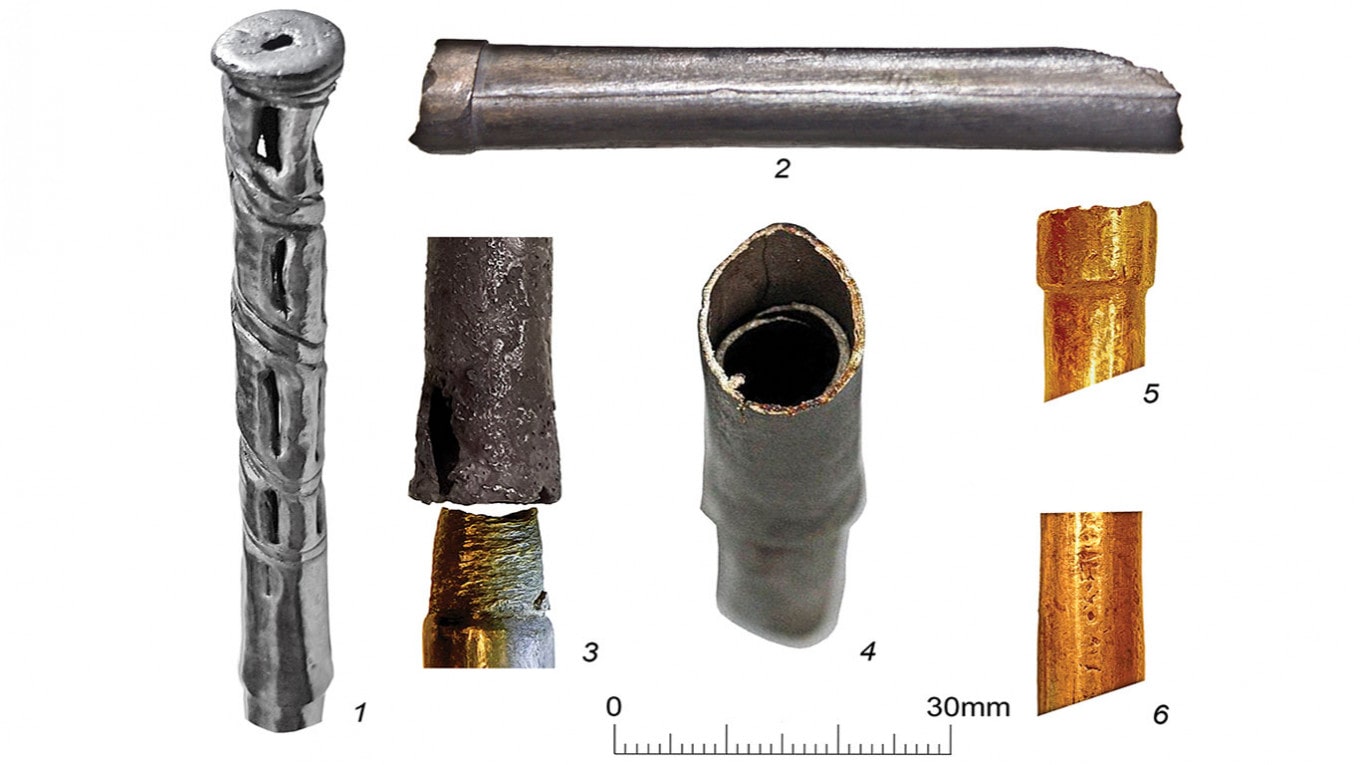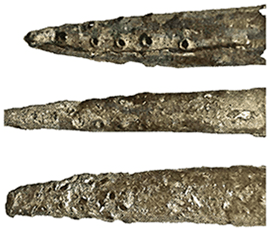 A set of Bronze Age gold and silver tubes discovered in southern Russia more than a century ago may be the first surviving straws used for communal beer drinking. Eight 1-meter-long tubes were found alongside other precious artifacts at a burial mound near the North Caucasus city of Maikop, which holds an archeological site that dates back to 3700-3000 BC. Russian archeologist Nikolai Veselovsky, who unearthed the burial mound in 1897, referred to the intricate tubes as “scepters.”
A set of Bronze Age gold and silver tubes discovered in southern Russia more than a century ago may be the first surviving straws used for communal beer drinking. Eight 1-meter-long tubes were found alongside other precious artifacts at a burial mound near the North Caucasus city of Maikop, which holds an archeological site that dates back to 3700-3000 BC. Russian archeologist Nikolai Veselovsky, who unearthed the burial mound in 1897, referred to the intricate tubes as “scepters.”“Re-examination of these objects, however, suggests they were used as tubes for the communal drinking of beer,” authors of the latest research claimed in the Antiquity Journal. They said their findings date back to a period that witnessed the onset of large-scale brewing during the Bronze Age in western Asia and the earliest depictions of drinking through a straw that became popular in Mesopotamian art. The thin tubes’ perforated tips were consistent with similar detachable metal straw-tip strainers used in reed straws that were widely used in the region in the second millennium BC.Residue analysis also showed barley starch granules inside one of the eight tubes, according to the study authors from the Russian Academy of Sciences.
 “The set of eight drinking tubes in the Maikop tomb may therefore represent the feasting equipment for eight individuals, who could have sat to drink beer from the single, large jar found in the tomb,” they said. If correct, these objects represent the earliest material evidence of drinking through long tubes. The tubes are held alongside other finds excavated from the Maikop mounds, or kurgans, in St. Petersburg’s State Hermitage Museum.
“The set of eight drinking tubes in the Maikop tomb may therefore represent the feasting equipment for eight individuals, who could have sat to drink beer from the single, large jar found in the tomb,” they said. If correct, these objects represent the earliest material evidence of drinking through long tubes. The tubes are held alongside other finds excavated from the Maikop mounds, or kurgans, in St. Petersburg’s State Hermitage Museum.The Bronze Age Maikop kurgan is one of the most richly furnished prehistoric burial mounds in the northern Caucasus. Its excavation in 1897 yielded a set of gold and silver tubes with elaborate tips and decorative bull figurines. Interpretations of these tubes include their use as sceptres and as poles to support a canopy. Re-examination of these objects, however, suggests they were used as tubes for the communal drinking of beer, with integral filters to remove impurities. If correct, these objects represent the earliest material evidence of drinking through long tubes—a practice that became common during feasts in the third and second millennia BC in the ancient Near East.
